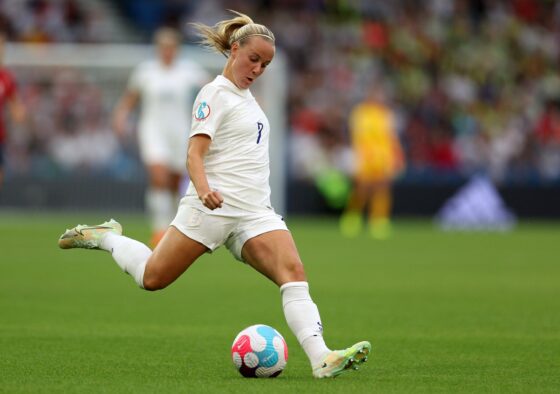
The issue of sports and the menstrual cycle has long been taboo and misunderstood. But the word is free, especially among elite athletes, around equipment and performance during menstrual cycles. This physiological specificity of women is also taken into account, in terms of sports results as well as mental and physical well-being.
“It’s great to have an all-white outfit, but it’s not necessarily appropriate when we’re on our period. We try to manage it as best we can.” On the sidelines of the Women’s Football Euro currently taking place, the English players take part in another fight. By this statement made by the “Lionesses” goalscorer Beth Mead during an interview given to the Telegraph, they ask Nike, the brand that equips them, to stop making white shorts. A request that was supported by many players, especially the captain of the French team (also equipped by Nike), Wendie Renard.
“We can exercise during menstruation.” This chorus repeats Dr. Carole Maitre, gynecologist-sports doctor at INSEP, tireless. “For team or individual athletes, outfits have evolved over the past twenty years”, she says again. Among the notable advances we can note the menstrual panties or the cups that provide more comfort and safety during the activity.
“Most problematic cases are menstrual cycles with pathology”explains the author of the INSEP guide, “High-Level Sportswomen: Cycles, Menstruation, Birth Control, and Performance”. With heavy menstruation, the specialist recommends not to underestimate their influence on fatigue and the risk of iron deficiency anemia.
“But the rules shouldn’t be synonymous with stopping exercise, she reassures, it’s better to limit endurance efforts and focus on muscle building, technique or doing splits.”
Positive effects on the body
In case of mild or moderate pain, practicing sports can reduce the effects. This phenomenon is related to the brain’s secretion of beta-endorphins, proteins that promote a sense of well-being and increase the pain sensitivity threshold. Be careful though, this has no effect on severe pain.
Other symptoms due to the premenstrual period, abnormal fatigue, a depressive tendency or even a “lack of drive”which affects 27% of sportswomen, according to a survey conducted by Carole Maitre in 2011. “So many ailments that a sporting activity can relieve”she remembers.
In some athletes, the exercise can lead to a reduction in the length of the menstrual cycle. For this, the activity must be intense and regular and lead to a reduction in the availability of energy. The fat mass then decreases and results in a shortage of carbohydrates and lipids. At this time, “the body slows down reproductive activity to conserve energy”explains Dr. Carole Maitre out. It is mainly seen in individual sports that require little mass, such as triathletes.
(ETX Daily Up)